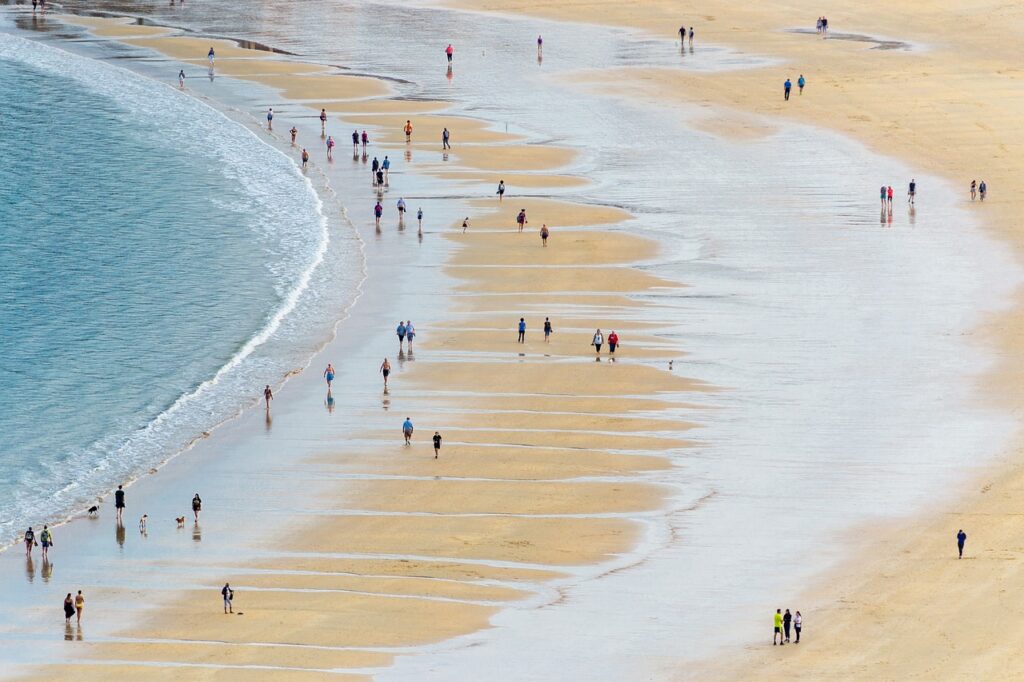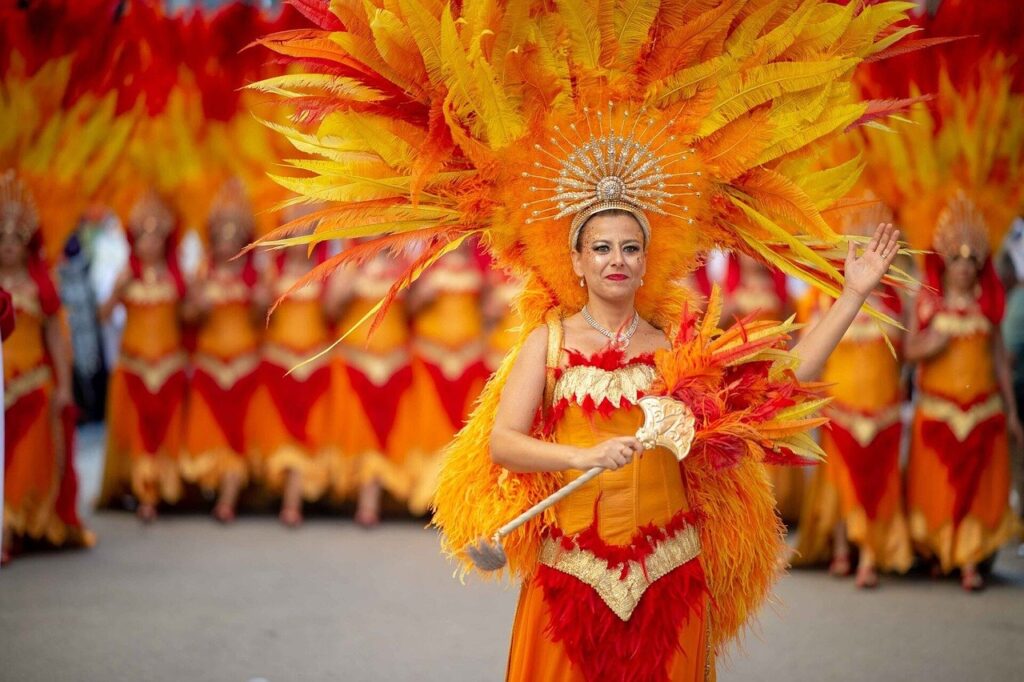FOCUS ON SPAIN
So, it has been on your bucket list, and now you can. So why not Spain? Go!
Spain is a country located in southwestern Europe, known for its rich history, diverse culture, and vibrant cities. It occupies most of the Iberian Peninsula and includes several archipelagos in the Mediterranean Sea and the Atlantic Ocean. Here are some key points about Spain:
Capital of Spain is Madrid, a country of a Population of approximately 47 million people
Spanish (officially known as Castilian), although other regional languages such as Catalan, Galician, and Basque are also spoken. Spain is a constitutional monarchy with a parliamentary system.
Spain has a complex history influenced by various cultures, including the Romans, Moors, and various Christian kingdoms. It played a significant role in European exploration and colonization during the Age of Discovery.
Spain is famous for its art, literature, architecture (including works by Gaudi and medieval landmarks), flamenco music and dance, bullfighting, and cuisine (such as paella and tapas).

Spain is one of the world’s top tourist destinations, attracting visitors to its beaches, historic cities (like Barcelona and Seville), and cultural attractions (such as the Prado Museum in Madrid). Spain has a diverse economy, with industries including tourism, manufacturing, agriculture, and services. It is also known for its contributions to renewable energy.

Spain’s geographic diversity ranges from Mediterranean beaches to rugged mountains and deserts, offering a wide range of landscapes and climates. It is also known for its festive spirit, with numerous celebrations and festivals throughout the year, including Semana Santa (Holy Week) and La Tomatina (a tomato-throwing festival).
The people of Spain, known as Spaniards or Spanish people, are diverse in terms of culture, ethnicity, and regional identities. Here are some key aspects about the people of Spain:
Spain has a diverse population that includes people of various ethnic backgrounds. The majority are ethnically Spanish (or Castilian), but there are also significant populations of Catalan, Galician, and Basque people, each with their own distinct languages, cultures, and identities.
Spanish, also known as Castilian (castellano), is the official language of Spain and the primary language spoken by most of the population. However, there are several co-official regional languages, such as Catalan, Galician, and Basque, spoken in their respective regions.
Spain is historically a predominantly Roman Catholic country, although religious practice has become more diverse in recent decades with increasing secularization and immigration from other parts of the world.
Spaniards take pride in their regional identities, which often play a significant role in shaping cultural traditions, cuisine, festivals, and dialects. For example, Catalans in Catalonia, Basques in the Basque Country, and Galicians in Galicia have distinct cultural practices and historical narratives.

Spaniards are known for their relaxed lifestyle, with a focus on family, socializing, and enjoying leisure time. This is the time after exploring the mountain terrains you get results of dopamine, the feel good hormone that helps appreciate the abundance you continue to witness. The siesta (afternoon nap) and evening social gatherings are cultural practices that reflect this laid-back approach to life.
Spanish cuisine is diverse and varies by region, but common elements include a love for fresh ingredients, olive oil, seafood (especially in coastal areas), cured meats (like jamón ibérico), and a wide variety of tapas (small dishes). Meals are often a social affair, enjoyed with family and friends.
Spaniards are passionate about their festivals and traditions, which vary widely across regions. Events like Semana Santa (Holy Week), La Tomatina (tomato throwing festival), and various local fiestas showcase Spain’s cultural vibrancy and community spirit.
Spain has a rich cultural heritage encompassing literature, art, music, and dance. Renowned artists such as Goya, Velázquez, and Picasso, as well as influential writers like Cervantes and Lorca, have shaped Spanish cultural identity and made significant contributions to world culture.
Overall, the people of Spain are characterized by their diversity, regional pride, rich cultural heritage, and a deep appreciation for food, art, and community celebrations. These elements contribute to Spain’s unique charm and appeal as a country with a distinct cultural identity.
Spain has made significant cultural contributions to the world across various fields. Here are some of the key cultural contributions of Spain:
Spain has a rich literary tradition dating back centuries. During the Golden Age (Siglo de Oro), Spanish literature flourished with writers like Miguel de Cervantes (author of “Don Quixote”), Lope de Vega, and Calderón de la Barca. In the 20th century, Spanish literature saw the emergence of figures like Federico García Lorca, Antonio Machado, and Miguel Hernández.
Spain is renowned for its art and architecture. The country boasts numerous UNESCO World Heritage Sites, including the works of Antoni Gaudí in Barcelona (such as the Sagrada Família and Park Güell), medieval architecture in cities like Toledo and Segovia, and the Moorish architecture of the Alhambra in Granada. Spanish painters such as Diego Velázquez, Francisco Goya, and Pablo Picasso have made lasting contributions to art history.
Flamenco, originating from Andalusia, is perhaps the most iconic Spanish music and dance form. It combines singing (cante), guitar playing (toque), dance (baile), and handclaps (palmas). Flamenco has influenced music globally and remains a symbol of Spanish cultural identity. Spain also has a rich classical music tradition, with composers like Isaac Albéniz and Manuel de Falla.
Spanish cuisine is diverse and celebrated worldwide. Tapas, small savory dishes, are a quintessential part of Spanish culinary culture. Other famous dishes include paella (originating from Valencia), gazpacho (a cold tomato soup), and various regional specialties like jamón ibérico (Iberian ham). Spanish wines, such as those from Rioja and Ribera del Duero, are highly regarded internationally.
Spain is known for its vibrant festivals and traditions. Semana Santa (Holy Week) is widely celebrated with processions in many cities. La Tomatina, an annual tomato-throwing festival in Buñol, Valencia, attracts participants from around the world. Bullfighting, although controversial, has deep cultural roots in Spain and is still practiced in certain regions.
Spanish, also known as Castilian, is one of the world’s most spoken languages and an official language of numerous countries. It has influenced other languages and cultures, particularly in Latin America, where it is widely spoken.
These cultural contributions reflect Spain’s rich history, regional diversity, and artistic innovation, making it a significant cultural powerhouse in Europe and beyond.
Spain is a country rich in diverse attractions, ranging from historic landmarks and vibrant cities to stunning natural landscapes and cultural experiences. Here are some of the top tourist attractions in Spain:
Antoni Gaudí’s masterpiece, this basilica is a UNESCO World Heritage Site and one of the most iconic landmarks in Barcelona, known for its unique architecture and intricate design.
A stunning palace and fortress complex from the Moorish era, the Alhambra is a UNESCO World Heritage Site and a must-visit for its beautiful Islamic architecture, gardens, and panoramic views of Granada.
One of the world’s premier art museums, the Prado houses an extensive collection of European art, including works by Velázquez, Goya, El Greco, and many others.
Another creation of Antoni Gaudí, Park Güell is a public park with whimsical architectural elements, colorful mosaics, and panoramic views of Barcelona.
A bustling tree-lined street in Barcelona, famous for its shops, restaurants, street performers, and lively atmosphere.
Madrid’s main square, known for its picturesque architecture, bustling cafes, and vibrant atmosphere, especially during festivals and events.
The Cathedral of Saint Mary of the See (Seville Cathedral) is the largest Gothic cathedral in the world and houses the tomb of Christopher Columbus. Next to it, the Alcázar of Seville is a stunning royal palace with beautiful gardens, intricate Moorish architecture, and historical significance.
A unique mountain range near Barcelona, known for its spectacular rock formations and the Benedictine monastery of Santa Maria de Montserrat, home to the Black Madonna statue.
A popular coastal region in southern Spain known for its beautiful beaches, resorts, and vibrant nightlife, including cities like Marbella and Malaga.
A pilgrimage route leading to the shrine of the apostle Saint James the Great in the Cathedral of Santiago de Compostela in Galicia, northern Spain. The route has cultural, religious, and historical significance and attracts pilgrims from around the world.
These attractions highlight Spain’s rich cultural heritage, stunning architecture, natural beauty, and vibrant cities, making it a top destination for travelers seeking history, art, cuisine, and relaxation.
For more information
